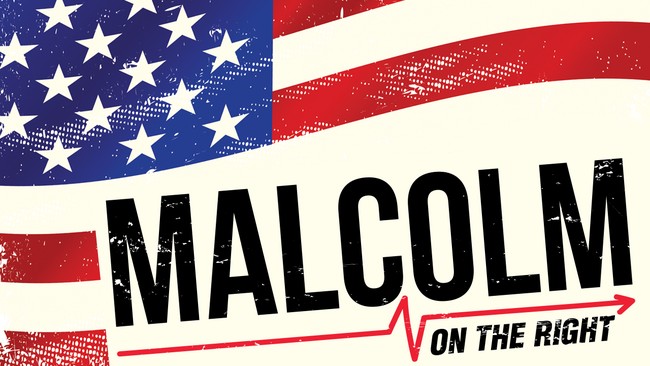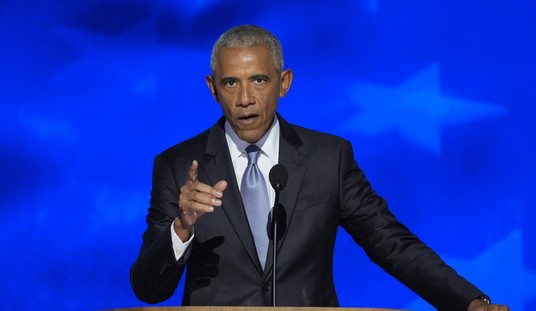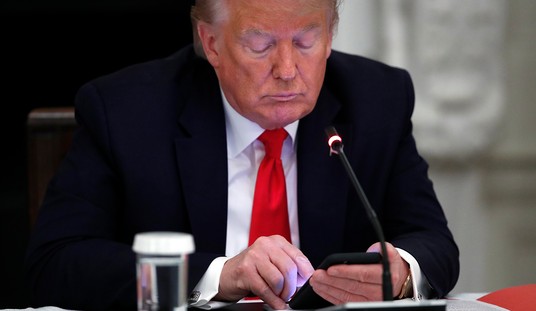Ordinarily, talking about an upcoming election during a traditional vacation month 63 weeks beforehand would be a waste of time. So much can happen during that interim in the world and in domestic politics. Think Sept. 11, 2001. Or what's occurred in the past 63 weeks.
But there is nothing, absolutely nothing, ordinary about this midterm election, this presidency, the president himself, or the nation’s current politics.
At the moment, the Democrat Party has mired itself in a deep political tar pit, stubbornly refusing to recognize or atone for its dangerous, deceitful Biden coverup, its feckless Harris-Walz alternative, or to abandon the progressive proclivities that lead it blindly into that wilderness swamp.
Absent among Democrats are any fresh ideas or leadership except for stale old personalities in granny glasses rotely clinging to shrill minority attacks when they should be in the cafeteria of a senior home playing Canasta.
The once-proud party of Andrew Jackson is spinning its wheels in crucial fundraising and flailing in ineffective protests against an intrepid, wiser man in his favored dark-blue suit, whose granite determination overcame all their clumsy conspiracies and media collusions to win an historic reelection.
That 79-year-old man, Donald J. Trump, is the same age as his predecessor, Joe Biden, when he began, literally, falling down on the White House job.
And yet a determined Trump with a long, aggressive agenda and the energy of a far younger man has become the most active and successful U.S. president in generations.
This weekend, Trump flew twice across the continent with a return landing at 5 a.m. and out for golf by noon. He's seeking to arrange some sort of end to the bloody fighting with the wannabe Russian tsar, who is attempting to vaporize the nation of Ukraine as Emperor Palpatine did to Alderan.
In just these first 209 days of his second term to change the face and scope of American government, this president has completed, launched, or terminated an amazing array of policies and programs. If you have TDS, the array is stunning.
He has signed nearly 200 executive orders, many erasing or countermanding the DEI orders and documents of his predecessor.
They include, but are hardly limited to:
- building a border wall,
- deporting some 1.6 million illegals,
- resetting international trade rules and systems,
- surgically removing the cancer of Woke from government, the military, and major universities,
- taking the offensive against deadly drug cartels,
- negotiating more than a billion dollars in university reparations for condoning antisemitism,
- legally combating entrenched media bias,
- and this past week, taking control of the crime-ridden District of Columbia, while suggesting he might do the same in other failing urban centers.
Unlike recent presidents, Trump is taking an active political role at the state level, urging red-state governors and legislatures to redraw congressional districts to embed stronger GOP control of the House of Representatives, starting in next year’s balloting.
It’s a dramatic recognition of the overriding importance of 2026’s midterm elections for the second half of his historic final term.
Losing control of either congressional chamber next year would cripple Trump’s hopes of continuing to reshape and reduce the federal government drastically and, not coincidentally, to build his own lasting presidential legacy as transformative.
If Democrats take the House, we can expect another vaudeville impeachment attempt. If they capture the Senate, say goodbye to new conservative judges and welcome back to Chuck Schumer's somnolent leadership.
In this midterm effort, Trump is fighting against history, as he did becoming only the second president ever to win non-consecutive terms. Although a president’s name is not on any midterm election ballot, historically, such elections are interim verdicts on a presidency.
The party of the sitting president has lost Senate seats in 15 of the last 20 midterms and 18 of the last 20 House midterms.
Bill Clinton’s first two years saw an assault weapons ban, a tax increase, and approval of homosexuals in the military. In 1994, his first midterm, voters ousted 10 Democrat governors, eight Democrat senators, and 54 House Democrats.
That “Republican Revolution” sank Clinton’s universal healthcare plan. It gave Republicans their first House majority in 40 years and their first total congressional control since 1946. It also pushed the savvy Clinton to the center, which enabled his 1996 reelection.
The only two exceptions to presidential House losses in modern midterms came in 2002 during the national unity surge following 9/11 and in 1998 when Republicans attempted to impeach Clinton over his oral affair with a White House intern.
George W. Bush’s second midterms in 2006 saw Democrats retake congressional control, largely as a result of failed Social Security reforms and the unexpected terrorist aftermath of the controversial Iraq war.
During Obama’s first midterms in 2010, Democrats lost 63 House seats — worst turnover there since the mid-1930s — mainly over rushed passage of ObamaCare and failure of a major economic stimulus package.

In some ways worse for Democrats in 2010, voters ousted nearly 700 Democrats in state legislative contests. That gave Republican governors and legislatures major advantages for that year’s required decennial reapportionments that then set up many future GOP successes. Democrats have yet to recover all those losses.
As Karl Rove notes, Trump’s second midterm in 2026 currently looks good for Republicans on paper:
The Senate map favors the GOP. Twenty of 22 Republican-held seats up next year are in red states, where the party should win if it doesn’t nominate scandal-ridden candidates. Two Democratic seats are in states Mr. Trump carried, five in states Kamala Harris took by single digits.
There are more Democratic House members in districts Mr. Trump won (13) than Republicans in districts Ms. Harris carried (three). The GOP’s chances will likely be improved by redistricting in Texas and Ohio.
Trump is also encouraging the GOP stronghold of Indiana to consider redistricting.
History shows both major parties bouncing back after election thumpings. In 1964, for example, Lyndon Johnson won the presidential election by taking 44 states over the Republican ticket headed by Sen. Barry Goldwater. The GOP does consistently better when it nominates governors and executives. (Actually, so do Democrats — Carter, Clinton.)
Yet in the midterm elections only two years later, the GOP took three new seats in the Senate, 47 in the House, and picked up seven new governorships. And just 24 months after that, Republicans won the first of five of the next six presidential elections.
However, Democrats show no signs so far of altering their current path. Indeed, they appear to be doubling down. In Congress, the melodramatic Cory Booker and less-than-charismatic Hakeem Jeffries can only schedule stunts like marathon speeches. That sent a few congressional reporters into fits of adulation, not over espousing fresh ideas, but simply their standing stamina.
Believe it or not, the hopeless Harris leads polls of favored 2028 presidential candidates. And if events proceed as expected, Democrats in New York City will enter 2026 having elected a de facto communist as mayor of the nation’s largest city, not the best party image for a midterm election year.
Democrat donors, who witnessed Harris burn through $100 million of their money during each of her 15 failed campaign weeks, seem to have shut their checkbooks for now.
The Democratic National Committee has only $15 million on hand heading toward 2026; one million dollars a month won’t cut it. Its Republican counterpart has $80 million so far. Trump’s PAC has $200 million in the bank. Money does not always guarantee success. But it sure makes things easier.
Still, it’s a long way. Trump’s poll numbers are rarely great, and they still aren’t. As mentioned, midterms are verdicts on incumbents.
American voters have very short memories. In my opinion, Trump should make a much bigger deal out of his border success.
The festering open border was the top issue last fall. For four years under Biden's willful neglect, untold millions of illegals seeped into the country, creating a rolling cultural, educational, financial, and law enforcement crisis for many years to come for taxpayers in communities across the country.
Now, the border is thoroughly closed. That’s pretty amazing! The president should go there this fall to remark on the sealed border and see the lengthening wall, and talk about it repeatedly.
How many illegals arrived during this same 209 days last year under Biden? How many new miles of steel barrier went up since Trump returned?
And do it again next year, maybe twice, to check progress and to repeat the message as additional reminders of his devotion to national security. That accomplishment needs embedding in voters' minds. Kristi Noem citing deportation numbers gets a fraction of the attention that repeated Trump mentions would.
Then, there’s the economy. Media have created widespread simmering fears about price increases from tariffs. Trump is a billionaire, and he’s delighted with billions in new government revenues from tariffs. But voters care more about the price of staples they confront daily.
If prices surge or even creep up significantly, you know media will trumpet that. Trump should talk openly about the challenge of trying to steer the world's largest economy.
To over-promise or skate past the real dinner-table difficulties, Trump risks sounding like the last president born in the 1940s, touting the fictitious success of Bidenomics when anyone who bought food knew otherwise.













